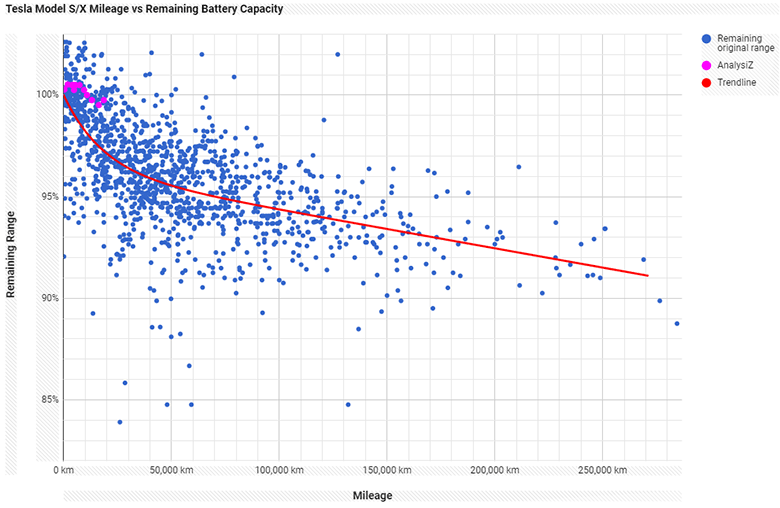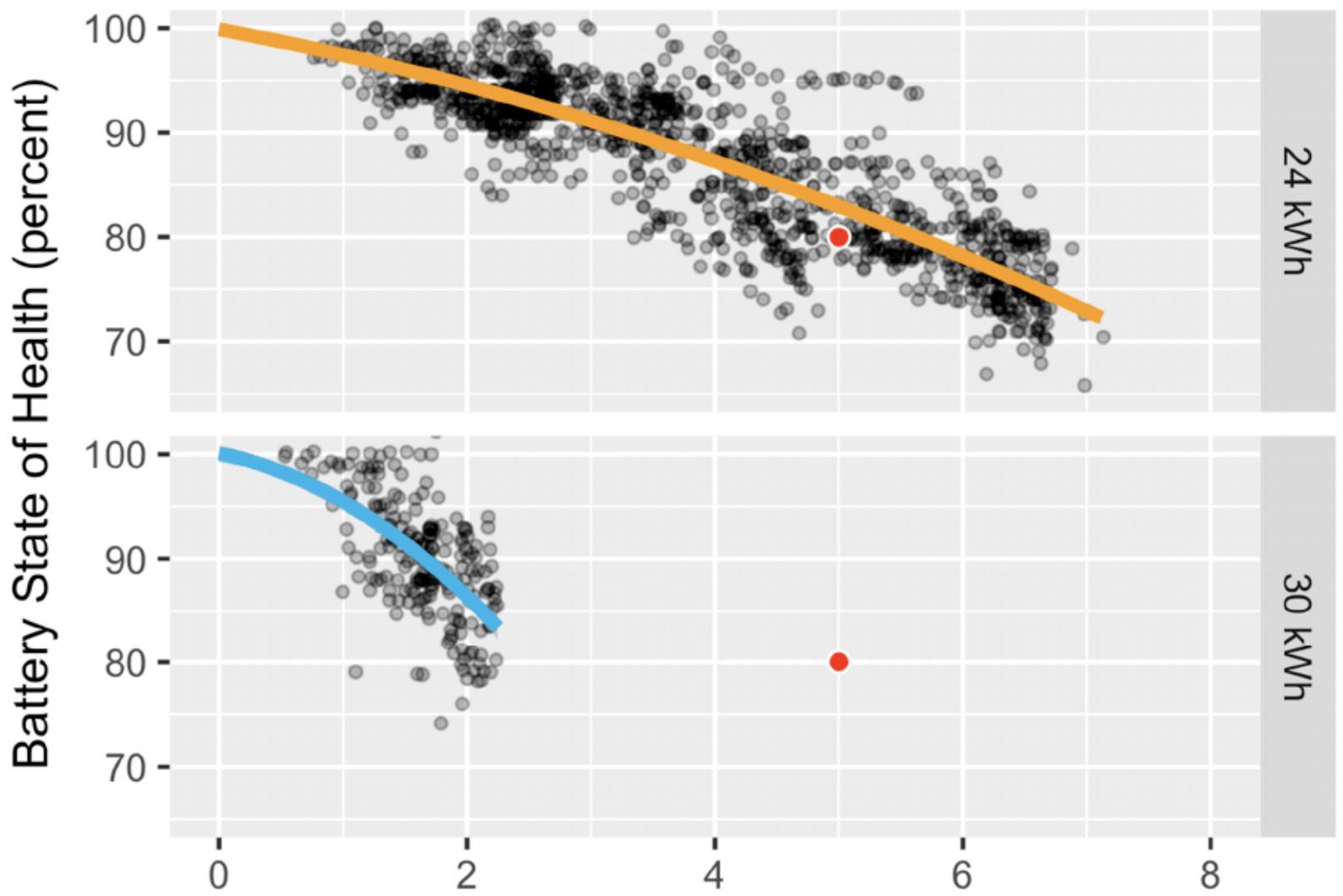
Battery degradation is one of the main concerns when purchasing an electric car such as Tesla Model S / X. According to the experience of using smartphones and other gadgets, we know that lithium-ion batteries tend to quickly degrade after a certain number of charge-discharge cycles, even if you treat them very carefully: charge up to 80% of capacity,
as Ilon Musk recommends , avoid a strong discharge, etc. d.
But it turns out that the batteries in Tesla cars are more “tenacious” than ordinary batteries in smartphones and than the same batteries in electric vehicles from other manufacturers. The Tesla group of car owners at the
Dutch-Belgian Forum gathered extensive statistics on more than 350 Tesla vehicles from around the world. The collected data is entered into a
publicly available spreadsheet .
The more time data is collected, the more reliable the analysis results. So far, the most complete statistics collected on the first 50 000 km. As can be seen from the graph above, in this section the Tesla Model S / X batteries degrade particularly intensively. Here they lose up to 5% of their capacity: this happens literally in the first months or years of operation of the car, depending on the intensity of use.
Of course, such data cannot but be alarming: if you extrapolate further the loss of 5% every 50,000 km, then after 250,000 km in the Tesla batteries only 77.4% of the original capacity will remain. And this is without taking into account the fact that degradation can accelerate with time.
But now potential and current owners of electric vehicles can breathe a sigh of relief. To lose another 5% of battery capacity, you will have to wait much longer if you wait for it at all. According to statistics, in most cases, after a run of 250,000 km, the battery capacity still exceeds 90%. Judging by the trend line, a drop to 90% of the initial capacity will come somewhere in the region of 300,000 km.
However, in this range, not a large selection of cars is yet represented. It can be assumed, and the bias of the sample. First, the data about their cars is made only by the readers of the forum of motorists - and this, by default, is more advanced motorists who know better in which modes it is better to exploit the car in order to save battery power. Secondly, the indicator of the saved battery capacity for a real geek can become a bit of a cause for pride - as a result, those car owners who have achieved a higher rate will begin to contribute information to the table. So the statistics can hardly be called representative.
By the way, for Model 3, Tesla installed a guarantee that the battery capacity will not fall below 70%. For a standard battery, the warranty is eight years or 160,000 km, for the Long Range Battery - the same eight years or 192,000 km (whichever comes first).
For comparison, the Chevy Bolt EV guarantees a minimum of 60% capacity for 8 years or 160,000 km, and the Nissan Leaf - 66% capacity for the same period and mileage. That is, Tesla's warranty conditions are slightly better than those of competitors, although the guarantee for minimum battery capacity appeared only in Model 3. It was not in previous models.
Extensive
objective research of data from 1382 Nissan Leaf electric vehicles sold in 2011–2017, apparently, shows a stronger degradation of batteries than on Tesla machines.

Original 24 kWh batteries degrade by about 20% after five years of operation, and the newer 30 kWh battery model loses its capacity even faster. It seems that here the loss of 20% occurs on average faster than in three years.
Experts
are of the opinion that Tesla cars use a much more advanced system of temperature control elements, than in the Nissan Leaf.
And if you believe the words of Ilona Mask, then Tesla batteries are even more reliable than can be judged from published graphs. He said that in the laboratory tests of repeated charge after the simulation of 800,000 km, the battery continued to work for more than 80% of the original capacity. With such mileage, the chassis of the car is more likely to fail than its battery.